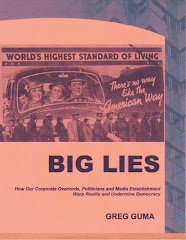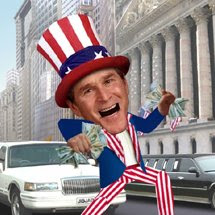Can the 2011 eruption become a full spectrum movement? Maybe. But it will have to expand beyond a "direct democracy" base.
By Greg Guma
Author and sixties activist Todd Gitlin considers the Occupy movement that swept across the world in 2011 a “qualified but real success.”
It was quixotic, he recently told a SRO crowd in the Sugar Maple Ballroom of the Davis Center at the University of Vermont. “And it worked.” But success also pointed to problems, he added, and “you could also say it failed.”
Drawing from material he has assembled in a new book, Occupy Nation, Gitlin traced the uprising’s evolution thus far and assessed the prospects for what he labeled Occupy 2.0.
He currently teaches journalism and sociology at Columbia University, but his credentials as a radical thinker date back to the early 1960s. As president of Students for a Democratic Society (SDS), a leading activist group, he helped to organize the first national demonstration against the War in Vietnam and the first sit-in against Apartheid in 1965 at the Chase Manhattan Bank.
Since then he has written 15 books, with titles like The Whole World Is Watching and The Sixties. As an academic authority on contemporary social movements he balances tough criticism of the Right with equally serious questions about the tactics and tone of Left activism.
During a one-hour lecture and follow up question period, Gitlin called what happened in September, 2011 an “eruption,” a “movement’s beginning,” and an attempt to reverse the long-term accumulation of power and wealth by the wealthiest 1 percent.
“No one saw it coming,” he said. But there were rumblings in advance and structural pre-conditions. One was a “divergence of wealth” so great that the 400 richest Americans now have as much as 50 percent of the population.
There were attempts to mobilize public discontent for years. However, “on September 17, the flame caught,” Gitlin said, referring to day an open call was issued to Occupy Wall Street, soon to be known as OWS or just Occupy. Anarchists and democratic activists with groups like Anonymous, A99 and US Day of Rage were among the first to join. According to David DeGraw, editor of the organizing site AmpedStatus.com, the unifying principle was, “Anything you can do to rebel against the system of economic tyranny in a non-violent manner is welcome.”
It was a radical upheaval that mirrored the outrage and defiance of the conservative, anti-government Tea Party movement that preceded it. “Occupy filled a moral and political space,” argued Gitlin. But it did not focus on government. Instead, its primary targets were “banksters” and corporate forces that had corrupted politics, crashed the economy, and increased the gap between rich and poor while enriching themselves.
Gitlin noted that the emergence of the terms 99 percent and 1 percent as part of the popular lexicon assisted President Obama in labeling Mitt Romney as a plutocrat early in the presidential race. On the other hand, most Democrats handled the nascent movement “gingerly,” while core members expressed skepticism, if not hostility to the current electoral system.
He defined Occupy as the first US social movement in modern history “to begin with the benefit of majority support for its main thrust.” Early unions did not experience “unadulterated” support, he noted. Neither the civil rights nor women’s movements were especially popular at the start, and the Vietnam War had 60 percent public support in the mid-1960s.
At the core, however, the movement’s identity was closely tied to its famously “horizontal,” cooperative style, most visible at General Assemblies. It expressed an “intense existential affirmation of itself,” Gitlin said, a desire to evolve a new way of life that emerged primarily in the form of encampments across the country.
Gitlin followed the movement closely and conducted numerous interviews for his book. He reports that many activists were inspired by uprisings from Egypt and Tunisia to Wisconsin.
In Vermont, a series of rallies and marches began about two weeks after the initial call. On Oct. 15, rallies were staged in several communities, drawing support from labor and politicians. At the end of the month, adopting a central strategy, about 50 people began an encampment in Burlington’s City Hall Park.
Over the next weeks, the movement’s broad scope and “leaderless” approach made it difficult to sustain momentum. There were organizational problems and internal disagreements about process and tactics. However, Gitlin says that most encampments, fundamentally expressions of the constitutional right of assembly to redress grievances, were broken up – often violently – during a coordinated response by local officials across the country.
“The right of assembly means more than speech,” Gitlin asserted. It is “the collective right to reason together.”
On the other hand, many Occupy supporters displayed a tendency to be “phobic” about cooptation and thought unions and moveon.org were political “Trojan horses.”
In Vermont's largest city, the flashpoint came in November with the untimely suicide of Joshua Pfenning, a 35-year-old homeless man, in a tent at the Burlington encampment. In response, Mayor Bob Kiss shut it down.
Occupy transformed the political culture by combining 18th century democratic principles with 21st century methods, Gitlin has concluded. As a result, the focus on debt and deficits that was dominating political debate gave way to a discussion of wealth inequality.
But the core of the movement wanted more. “They wanted to produce a society of their own, and half believed they were producing it.”
A year later, Gitlin estimates that Occupy still has a core membership in the tens of thousands, “largely young and dis-embedded.” He compared it to the wing of the civil rights movement that was prepared to engage in civil disobedience.
He also pointed to promising spin offs like a Jubilee movement to cancel debt and an anti-foreclosure campaign, but he wasn’t certain whether Occupy itself will have staying power.
For some form of Occupy 2.0 to emerge as a “full spectrum movement,” he advised that it will have to expand the appeal beyond “those who want direct democracy.” He called its focus on encampments “inspiring but self-limiting,” and argued that it “can’t be run horizontally.”
One recommended strategy is to seek broad agreement on a popular “charter,” a list of basic, achievable goals. The formal presentation concluded with his own seven point agenda, including progressive taxation, separating commercial from investment banks, a living wage, and reduced military spending.
A next phase for Occupy, whether it’s 2.0 or takes another name, certainly remains possible, Gitlin says. But up to this point the upheaval has been “more notional than actual.”
The basic problem is that “there aren’t enough saints.” It’s a predicament, he adds, but there is little potential in trying to convince people committed to the prophetic vision of a radically democratic society to simply give it up.
On the other hand, Gitlin muses, “it’s going to be a weird movement if it’s restricted to people who can show up for general assemblies.”






























